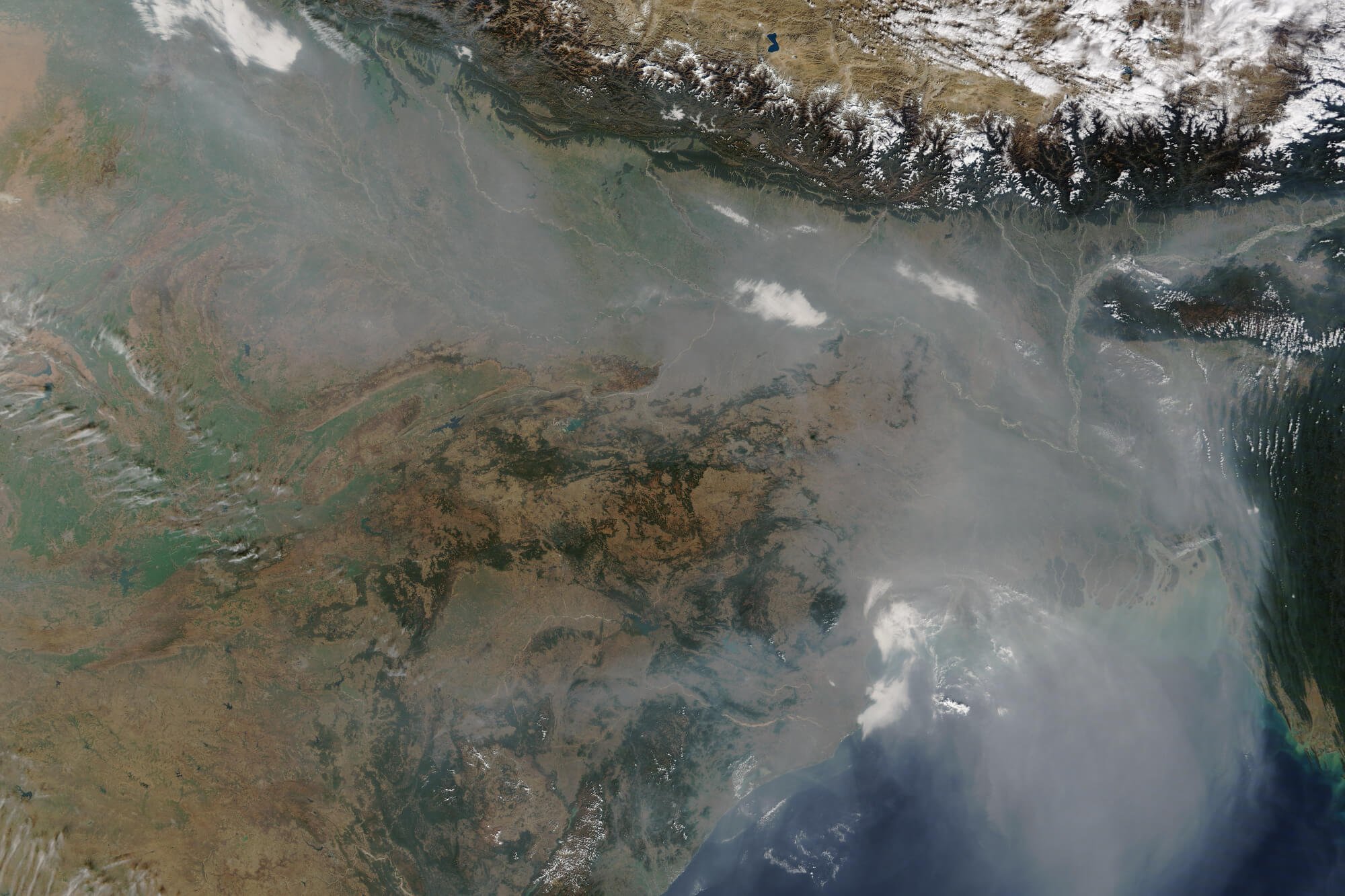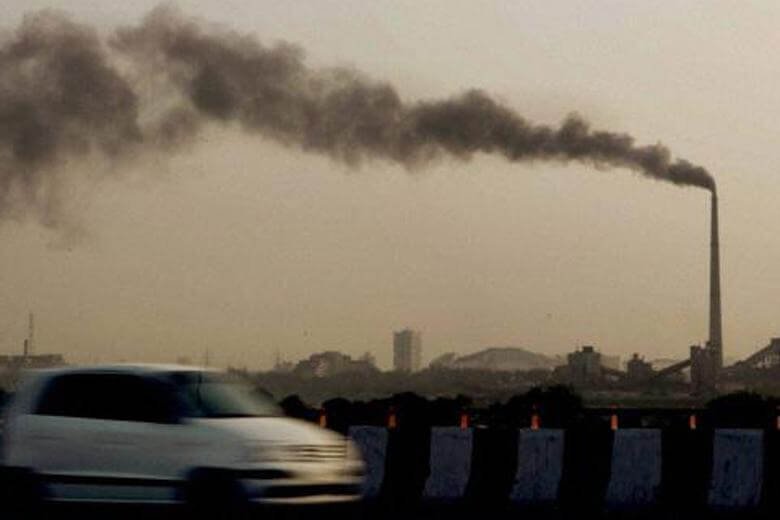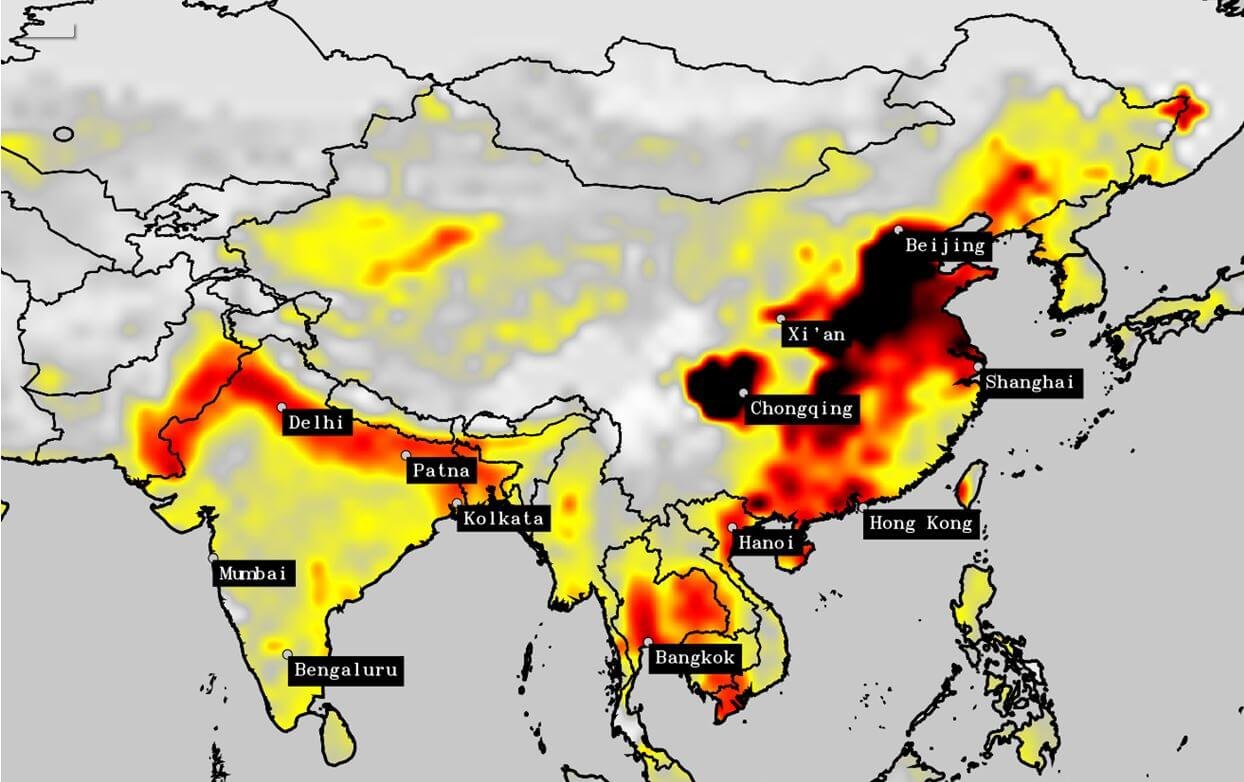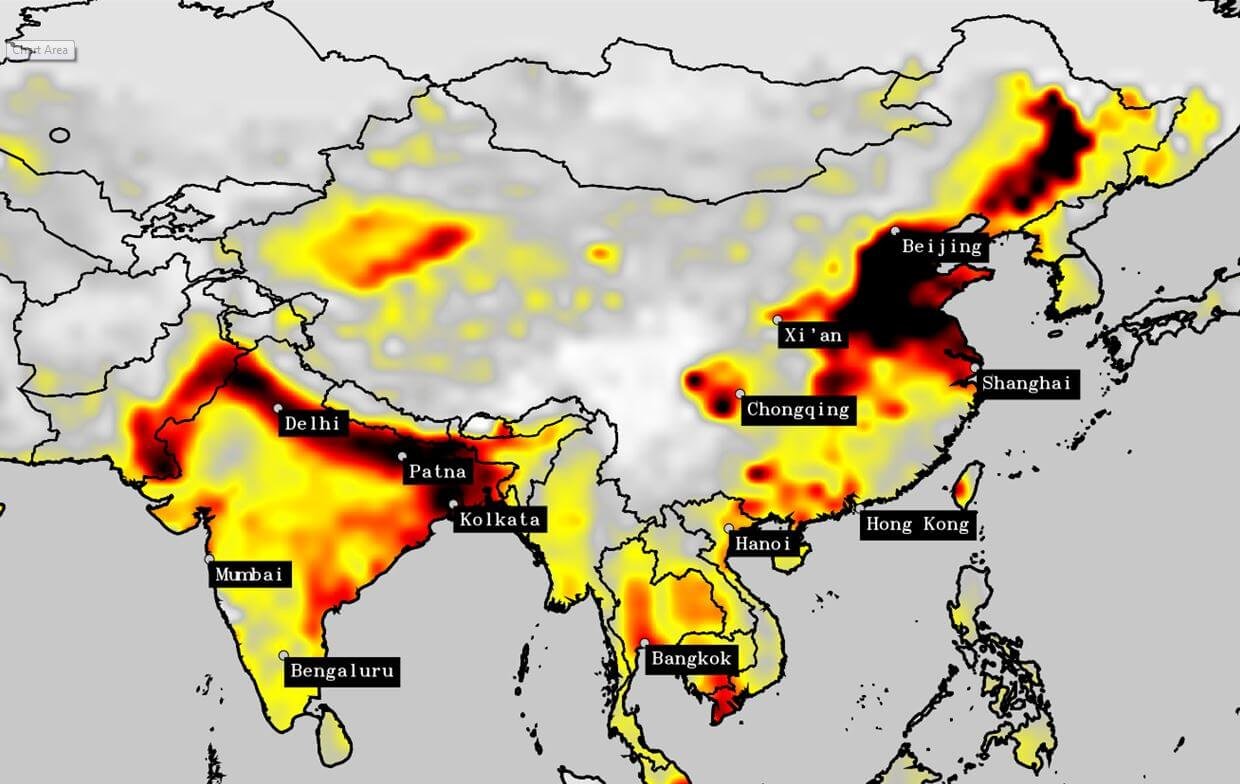In what can be seen as an addition to the environmental woes of India, new satellite images by NASA reveal that ‘toxic air’, in the form of a thick cloud of pollution, is blocking major parts of the Indian subcontinent from receiving optimum sunlight.

According to images acquired from the Moderate Resolution Imaging Spectroradiometer (MODIS) on the Aqua and Terra satellites, the stretch of land from eastern Pakistan, all the way to Bangladesh, including parts of the Indo-Gangetic plain, is subjected to the worst possible air in the post Monsoon months, from October till the end of January. The bad ‘air’ here is the haze created by tiny and highly toxic PM2.5 particles that make the air heavy and colloidal. This haze blocks sunlight, and traps additional pollutants inside the atmosphere, thus triggering an increase in pollution levels.
According to the data, in the years between 2008 and 2014, India saw about 10 times less sunshine than USA in the post monsoon months. Apart from the dangers of low sunlight reception for an area, the presence of PM2.5 particles in the air is in itself a major health concern.

Sources of PM2.5 release in India include cooking on domestic emissions (natural or wood/dung-fires), forest fires, industrial emissions, as well as vehicular smoke.
According to Pawan Gupta of Goddard Earth Sciences Technology and Research, the problem is doubled when domestic and industrial emissions are faced with a difficult winter climate and a topography, both of which encourage trapping of pollutants present in the atmosphere.
In 2005

The topography of the Indo-Gangetic plains, at the base of the Himalayas, leads to a lot of trapping of pollutants. The Himalayan range provide a natural barrier to air over the region, leading to the formation of the haze that further traps pollutants.
A previous report by Greenpeace, based on NASA images, showed that Indians in 2015 had been exposed to higher levels of pollution than people in China, widely considered to be the most polluted country in the world. This reduce in China’s pollution and increase in its neighbor India’s pollution, is being seen as a direct consequence of the sweeping pollution control policy measures that China initiated, and India, simultaneously, failed to.
In 2015

Yet another study claimed that Delhiites are dying 6.3 years faster than people living in the rest of the world due to high levels of PM2.5 particles in the atmosphere. The capital, which is part of the Indo-Gangetic plain, and one of the most polluted cities in the country, has special concern to worry, with its massive population, both of people and cars, and large scale industrial emissions.
Though the Delhi government has taken various measures such as banning of diesel-run SUVs, implementing programs such as Car Free Day, Odd-Even rule, banning half of Delhi’s cars and increasing taxes on diesel, any major or considerable drop in pollution levels is yet to be observed.

















